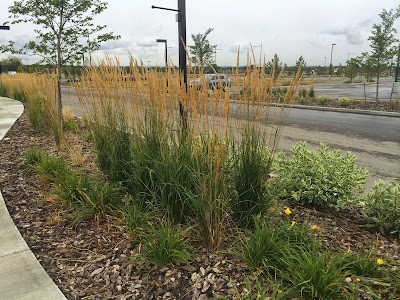 |
| Photo by Dryad's Bounty |
Pentatomidae - Cosmopepla lintneriana - Twice-stabbed Stink Bug
That's the little stinker seen above on the columbine in a local garden. While this particular bug, the Twice Stabbed Stink Bug, will not defoliate a plant, it does have a penchant for seeds which can be a problem for raspberry growers and apparently pea plants. Otherwise, there's no need to be alarmed when you see them as they pose no significant risk to your perennials.
The Twice-stabbed Stink Bug can be identified by its markings, the two red dots on its back. It is black with a shield shape. They are common in the prairie provinces and a mild winter may precipitate sightings of greater numbers. Usually the cold winters of the prairies keeps their numbers in check.
To help prevent future "infestations," do a thorough clean-up in the fall of all debris. The stink bug likes to overwinter in leaf litter. They may also be seen gathered together beneath mulch and rocks.
If you are inclined to pick them off by hand, wear gloves because these shy stink bugs bite! They're not called stink bugs for no reason either. When threatened they release an odor similar to that of cilantro. You may pick them up and drop them in soapy water to dispose of them, as one gardener suggested.
You will find their eggs lined up neatly in rows on the undersides of leaves. Check for dark markings on the eggs before disposing of them as the markings indicate they have likely been parasitized so the work is done for you.
Parasitic wasps, ladybugs and birds are their natural enemies. So welcome these predators to your garden and avoid the use of chemicals which may harm beneficial insects as well.





